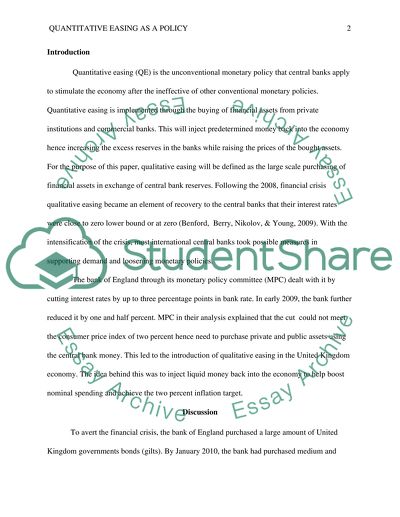Cite this document
(Quantitative Easing as a Policy Research Paper Example | Topics and Well Written Essays - 2000 words, n.d.)
Quantitative Easing as a Policy Research Paper Example | Topics and Well Written Essays - 2000 words. Retrieved from https://studentshare.org/finance-accounting/1463507-critically-examine-the-use-of-the-quantitative
Quantitative Easing as a Policy Research Paper Example | Topics and Well Written Essays - 2000 words. Retrieved from https://studentshare.org/finance-accounting/1463507-critically-examine-the-use-of-the-quantitative
(Quantitative Easing As a Policy Research Paper Example | Topics and Well Written Essays - 2000 Words)
Quantitative Easing As a Policy Research Paper Example | Topics and Well Written Essays - 2000 Words. https://studentshare.org/finance-accounting/1463507-critically-examine-the-use-of-the-quantitative.
Quantitative Easing As a Policy Research Paper Example | Topics and Well Written Essays - 2000 Words. https://studentshare.org/finance-accounting/1463507-critically-examine-the-use-of-the-quantitative.
“Quantitative Easing As a Policy Research Paper Example | Topics and Well Written Essays - 2000 Words”, n.d. https://studentshare.org/finance-accounting/1463507-critically-examine-the-use-of-the-quantitative.


